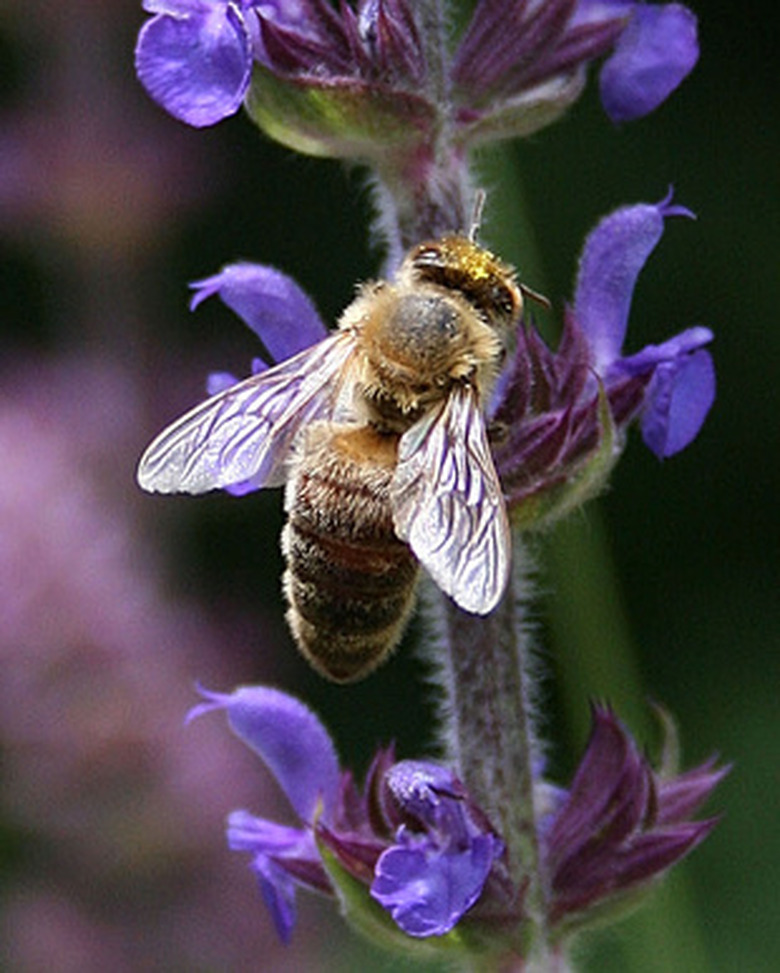Florida Plants For Honeybees
Florida's honeybees are supported by numerous plant species, but a short list of major nectar producers account for 90 percent of the state's honey production, according to the University of Florida Extension. Close proximity of bee colonies to nectar sources is important. Many minor nectar producers work in conjunction with major producers to support bee colonies.
Citrus
Citrus is the only major nectar-producing species cultivated (not wild) in Florida, according to University of Florida extension. Orange blossom honey, with its distinctive flavor and light color, is popular commercially.
Mexican Clover
Mexican clover (Richardia scabra L.) is also known as pusley. It is a small herb with white flowers found in cultivated areas of Florida. In Florida, pusley blooms in almost any month lacking frost.
- Florida's honeybees are supported by numerous plant species, but a short list of major nectar producers account for 90 percent of the state's honey production, according to the University of Florida Extension.
Gallberry
Gallberry (Ilex glabra) is a shrub commonly found in flatwood areas of Florida, and is a major nectar source. Gallberry blooms from March through May, and is considered to produce a fine grade of honey.
Cabbage Palm
Florida's state tree, the cabbage palm (Sabal palmetto), is found throughout the state. Often seen growing wild, cabbage palms are also cultivated as specimen trees in the home landscape and as street plantings. Cabbage palms produce flowers on multi-branched, 4 foot long stalks that attract bees in June and July.
White Tupelo
White tupelo (Nyssa ogeche), also known as ogeechee lime, is a small-to-medium sized tree found in North and Central Florida to USDA hardiness zone 9. It is a major nectar source for honey bees in Florida. Tupelo honey is prized for its quality. White tupelo is found in nurseries in limited quantities, but is recommended for use in home landscapes, buffer zones around parking lots and as a residential street tree.
- Gallberry (Ilex glabra) is a shrub commonly found in flatwood areas of Florida, and is a major nectar source.
Red Maple
Red maple (Acer rubrum), also known as swamp maple, grows throughout Florida producing one of the first sources of pollen and nectar for honeybees each year. Its showy red flowers and seeds are abundant in January and February. Red maples are common in woodland areas, parks and in the home landscape.
Ornamentals
Numerous ornamentals in the home landscape will provide blossoms that are attractive to honeybees. Popular trees include hollies, magnolias and redbuds. Good shrubs include privets, ligustrums, and dwarf yaupon holly. Plant diversity in the landscape provides options to honeybees throughout the year, especially in urbanized areas that may limit traditional, wild sources of bee attractors.
- Red maple (Acer rubrum), also known as swamp maple, grows throughout Florida producing one of the first sources of pollen and nectar for honeybees each year.
References
- Landscape Plants for Subtropical Climates; Bijan Dehgan; 1998
